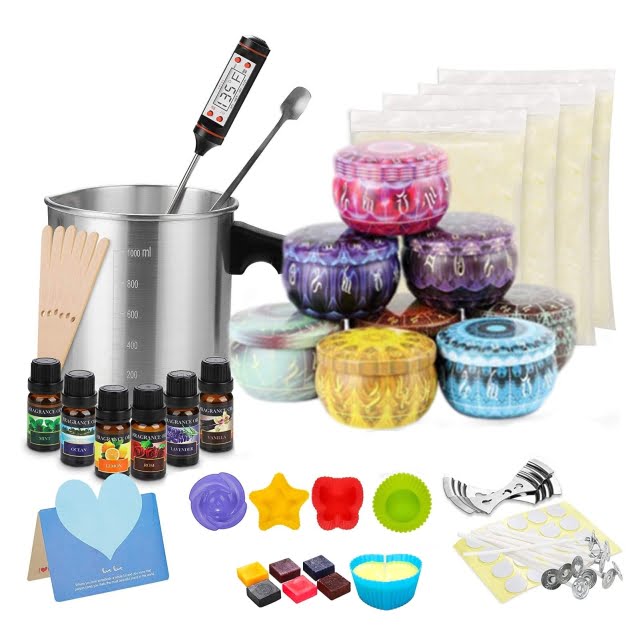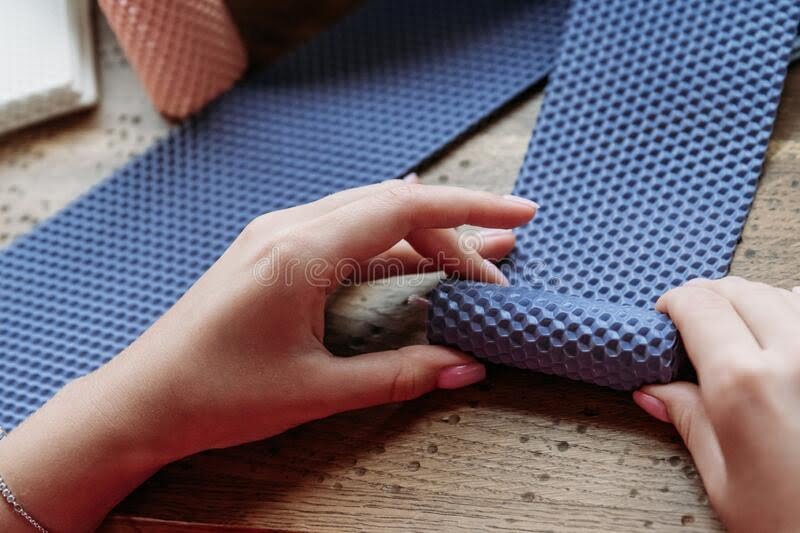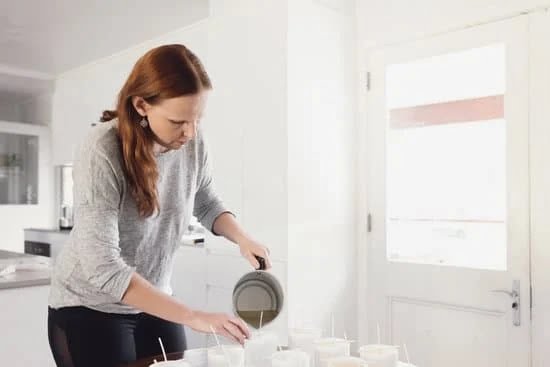Making your own soy candles is a great way to get creative, while also giving your home a comforting and luxurious ambience. Not only that, but soy candles are also safer for the environment than traditional beeswax and paraffin wax candles too. In this day and age there are endless scents available to combine and create unique concoctions with, so making soy candles can be both fun and rewarding.
However, if you’re new to candle-making it can be quite daunting. To help out beginners we have created some tips for making soy candles that will make the process easier and hopefully more enjoyable.
The most important thing you need when making soy candles is pure sustainably sourced sustainable soy wax flakes. Avoid versions with any additives as these can change your overall scent and affect the quality of burning of the candle (e.g shortening the burn time).
The next step would be choosing your chosen scent – depending on what you have purchased, mix between 1/4 oz (6-7 drops) tp 1 oz (25 Drops) of fragrance per pound of wax hence why it’s important to buy high-quality fragrance oils so the scent won’t fade quicker due to exposing it to excessive heat when pouring the melted wax into containers during manufacturing processes.
A final tip would be using natural wicks which have been produced from cotton materials instead of zinc or lead like regular wicks do – this helps promoet cleaner burning process as well help reduce emissions in comparison to regular ones To summarize, when making soy candle selecting quality ingredients such as sustainable sourced soy wax flakes can help make sure your candle provide an optimal performance results while being safe for consumers health.
Along with natural wicksfor clean burn, we encourage you experiment purchasing high grade fragrances since quantity may vary depending on how strong you want the scent to be.
All in all creating soy beans allowsyou unleash your inner creativity while enjoying pleasant aromas.
Choosing Natural Soy Candle Wax
When making soy candles, it is important to use a wax specifically formulated for candle making. The primary benefit of using a soy-based wax in particular over paraffin or beeswax products is that it is 100% renewable, and also biodegradable. This makes it more eco-friendly than other options.
In addition, using natural soy candle wax also requires far less energy to produce as compared to paraffin, and can burn cleaner with fewer soot emissions than traditional paraffin candles. When shopping for the right wax for your project, look for eco-friendly labels on the packaging as well as certifications like USDA Certified Organic or Non-GMO Project verified seal.
Price may vary depending on the type and quality of wax you choose, so consider your budget when selecting an appropriate product.
Making Soy Candles
When making soy candles there are a few key points to keep in mind for achieving the most successful results:
- Always use new wicks specifically designed or certified safe for use with natural soywax
- Ensure adequate ventilation when melting and pouring your wax
- Pour only a small amount of wax at first to test if any adjustments need to be made before committing all of it
- Allow several hours between successive pours for each layer to cool before continuing
To achieve the best overall result be sure to carefully follow the manufacturer’s recommended measurements and instructions regarding melting temperature, dry time, curing times and needed additives (e.g., scent). In general, keep track of weight and volume ratios throughout the process; too much oil could cause an imbalance in burning performance while not enough oil could lead to an overly hard texture upon cooling.
Finally test each batch by lighting one or two tester candles before beginning production on large batches of finished candles.
Essential Supplies for Making Soy Candles
Making soy candles is a great and rewarding activity; it’s eco-friendly, fun to create and makes a perfect gift. To make your own, you need some essential supplies:
- Soy wax flakes
- A double boiler
- Container or mold for the candle
- Fragrance oils
- Candle wick
Besides these items, you’ll need additional components such as glassware, thermometers, a stirring rod, dye blocks and fragrance testing strips. The added components can help make customised candles in different shapes and sizes. You can even colour your candles to match the décor of any room. Most of these materials are easily available from craft stores or online retailers.
Once you have these essential supplies on hand, use a double boiler to melt the wax flakes. Ensure that there is no water in the boiling pot before melting the wax flakes. Feel free to add dye blocks as well but make sure they are completely dissolved before taking the mixture off the heat source.
Introduce fragrance oil gradually and mix with the melted wax until an ideal consistency is achieved; this could range from one teaspoon of essential oils for every pound of wax flakes to multiple drops per ounce according to preference in scent strength. To test this, use a strip dip it into cooled wax until saturation is reached then remove it and allow air drying before smelling the result.
With practice you will be able to determine what ratio works best to achieve desired results.
With soy candles it’s important not to burn them longer than four hours at once so they last longer while displaying consistent melts throughout their life cycles. When inserting wicks into containers or molds measure carefully ensuring that all wicks are placed parallel at similar depths throughout each vessel; this ensures consistent burning over time with minimal smoke output while achieving reliable performance while maintaining a pleasant presentation in any area when lit for visual effect.
Finally trimming excess wick out before lighting each batch helps maintain safe burning distances between flames and walls/objects close by for maximum safety practice by reducing potential hazards due too much oxygen being supplied near flammable objects causing unwanted fires if left unsupervised for too long.
Adding Color and Embellishments to Your Soy Candles
Adding color and embellishments to your soy candles are a fun way to personalize and customize your candles in order to make them unique and give them a special look. For example, you can create beautiful multi-colored layer candles or add decorations like glitter or beads to make the candle stand out visually.
Choosing Colored Wax
When adding color, you have a couple of options. One option is to buy colored wax flakes that you mix with the soy wax flakes before pouring your candle mixture into the container.
This is perfect for if you want the whole inside layer of your candle to be one specific color or a combination of two colors. You just need to make sure that you buy wax flakes that are specifically made for use in candles since some other types can be very dangerous when ignited and released into the air.
Adding Dye Blocks
The second option is to use dye blocks which are small hard blocks that contain concentrated pigment colors specifically designed for use in candles. To use these, simply cut off pieces of the block according to how dark or light you want your color and stir them into your melted wax until it reaches the desired shade.
This method is better if you only want certain areas or parts of your candle to be a certain color rather than an all over color change.
Using Embellishments
Once you’ve set up your colored wax, there are lots of embellishments which can help further customize and add some flair to your finished product. Glitters, sequins, petals and beads can all be infused directly into cooled layers of the candle mixture before pouring on another layer on top in order create a unique pattern above each layer giving each candle its own almost three-dimensional texture and visual appeal when lit up.
Preparing and Melting the Wax
1. Start by measuring out the appropriate amount of wax for your specific project. Soy wax is available in several sizes and formats, so choose what works best depending on the size of the candles you’re making.
2. After you’ve measured out enough soy wax for your project, it needs to be melted in order to use it for candle making. There are a few different ways you can do this safely while avoiding any potential hazards.
3. Firstly, if you have purchased your soy wax flakes or chunks, melt them in an old pot over the stove on low heat; never leave any open flame unattended whilst doing so. Another option is to melt your soy wax in an electric melter which can provide greater control over temperature with less risk, making it a safe and recommended method of melting soy wax for candle making purposes.
Making The Soy Candle
- Now that all of your materials are ready, you need to prepare the mold or container into which you will pour your molten soy wax.
- Instructions vary depending on the type of mold being used; however, there are usually a few basic steps that should always be followed.
- Firstly measure out the wick length and cut accordingly before inserting into the base or bottom of each mold or container ensuring that it’s as close as possible without touching any sides or edges so that when lit it can burn evenly.
Adding Fragrance and Colour
1. When using dye or fragrance oil for added colour or scent to your candle, always ensure they are specifically designed for use with soywax only. Using generic products may cause burning issues and result in poor-quality candles overall.
2. Before adding either dyes blocks or fragrance oils to melted soywax make sure both ingredients are fully incorporated by stirring gently until uniform (usually around 120°F). Adding colour/fragrance too early could cause separation once cooled so follow instructions carefully and take note not to exceed suggested temperatures per given product guidelines otherwise warping could occur during curing stage leading up to actual lighting of candle later down line.
3. Once these components have been mixed together it’s time to actually pour it into the prepared containers/molds – again make sure try not stick too long at any one area in order not disturb centre area where wick resides (which could ruin entire batch); fill container molds just slightly above rim(as shrinkage will occur later) then allow cooling process begin.
Pouring the Wax
Making your own soy candles is a great DIY project that can have marvelous results. To get great candles it is important to keep a few key points in mind when pouring the wax.
When pouring the wax, be sure to wear oven mitts or an oven mitt and a dish towel. Wax can easily reach temperatures of 180 degrees Fahrenheit, and contact with skin at this temperature will certainly cause serious injury. It is also important to not overfill your containers; you may want them overflowing, but leaving some space for molten wax ensures that you have enough room for heat expansion, which could cause overflow from too-full containers if ignored.
It is best practice to double-pour soy candles – meaning pour the wax once into your container and allow it to partially cool before topping up with more wax as needed. Double-pouring prevents pockets of air from becoming trapped around the wick, which will prevent any “tunnelling” or other uneven surface conditions once the candle cools completely.
Make sure to allow ample time between pours so that the bottom layer of wax has cooled significantly before applying additional layers on top of it.
To add any colourant or fragrance, wait until the main bulk of liquid wax has been poured and then very lightly sprinkle a few granules directly onto the surface before gently stirring in with a skewer or chopstick – this will help prevent pooled colour streaks in addition to helping disperse your added elements evenly throughout the candle’s body as it cools.
Taking care not to rush when adding these additional ingredients will help maintain consistency throughout each candle you make; make sure you stir lightly and evenly again on top after adding scents and colourants for maximum effect.
Finishing Touches for Professional-Looking Soy Candles
Soy candles are relatively easy to make and require few supplies, making them an ideal project for beginner candle makers. However, finishing touches can be important in making these homemade candles look as professional as possible. Here are a few tips for helpful final touches when making soy candles:
Clean Edges
Pour the soy wax into the container slowly and carefully to minimize air bubbles, which often cause a jagged finish on the edges of the candle. It is best if you use a wide-mouth funnel when you pour the wax to limit spills and reduce air bubbles even further.
Making sure your wick is centered before pouring also helps prevent piped edges from forming. If your finished candle has imperfect edges, you can slightly melt them using a lighter or heat gun and pushing it around with a spoon or stir stick until they smooth out.
Refill Holes
To make sure your candle burns evenly, it is important that there aren’t holes in the wax near the wick, This can lead to large sections of candle remaining unburned when lit. Refilling holes with extra melted soy wax will help the flame draw up enough fuel so that all parts of the candle eventually burn down simultaneously.
The easiest way to do this is by cutting either a wax chip or left-over sections of melted wax then place inside of any remaining voids or depressions at around ¼ inch below surface level so that the added wax melts into where it needs to be naturally when lit.
Forgive Ash & Prevent Relighting Bobbles
Candles made with coconut or soy should have little to no ash deposits on their surface but this isn’t always an exact science since different oils may react differently with each type of wax leading to slight dustings along its surface. Using melted beeswax drops help create a coating over the entire top of your candle once its cooled completely and once it sets just lightly brush off any excess powdery residue.
Finally, adding essential oils or fragrances after your soy has been heated could cause relighting bobbles or “mushroom tops” on your wicks which prevents an even burn – To avoid this try always adding fragrance oil while slow stirring continuously during cooling and leave several inches off free space above your completed poured candidate (no topping).
- Clean any jagged edges on soy candles using flame from lighter.
- Refill any holes in soy candles with extra melted soy wax.
- Add beeswax drops over top of cooled down soys for additional protection against ash deposit.
- Forgive relighting bobbles by adding essential oils whey slow stirring continuously during cooling period
Curing Process for Optimal Performance
Before burning or giving your soy candles away as gifts, it is important to properly cure them. Curing allows the fragrances and waxes to be completely blended together, improving the burn performance and fragrance. Depending on the wax you use (100% soy, beeswax, or a blend of both), this process can take four to six weeks.
Once cured, these candles need to remain in an area where they won’t be disturbed. This way they will not form an improper melt pool on the surface once lit for the first time.
Curing with Temperature
The curing process is best done in temperatures around 70 degrees Fahrenheit (21 degrees Celsius) for 8 hours each day over a period of 4-6 weeks. Candles made from beeswax only may require less curing time than those that are made from 100% soy wax, but 6 weeks should be sufficient for either type of candle in achieving optimal performance when burning.
Heat and adequate ventilation are also important components throughout the curing phase-too much heat can cause discoloration or other imperfections that could affect your candles’ performance and aesthetic appeal.
Keeping Soy Wax Clean During Cure Period
If your wax isn’t kept clean during this period, it could result in poor burning performance due to excess moisture or wax build-up at the freezing edge (the wick will not stay lit if built up). You should regularly dust off any wax residue that accumulates during curing so that your candles will burn evenly after all is said and done.
A soft brush will make removing any smaller particles of dirt or debris more manageable if you come across some extra difficult cases.
Prior to placing them into containers, ensure that all undipped wicks have been trimmed down to a few millimeters tall and contain no knots or tangles-this extra step makes lighting and extinguishing easier without risking possible firescapes from longer wicks.
Essential Safety Tips for Making Soy Candles
When poured correctly and made with quality ingredients, soy candles are safe and non-toxic. However, candle-making requires safety measures to be taken at all times due to the heat produced by burning wicks and wax. Here are some essential tips for making safe soy candles:
- Always burn your soy candles in heatproof containers no larger than 10 ounces.
- Keep wicks trimmed to 1/4 of an inch or shorter when burning a candle.
- Avoid placing the candle near any open windows, on top of a television or in used appliances.
When melting wax for making soy candles take care that it is done only in an appropriate pot with a double boiler system over an indirect flame. Make sure that your work environment is well ventilated as the vapors from the hot wax can irritate your lungs if inhaled directly. It’s always smart to wear protective oven mitts when handling hot pots and containers filled with melted wax as they become extremely hot during the pouring process.
When setting up your workspace for candle-making be sure there is nothing inflammable present around you such as papers, books, couches or furniture. Be especially careful not to leave anything hanging over your workspace where it touches another surface such as a wall or countertop because these surfaces can get very hot during the pouring process and may cause accidental fire hazards if left unattended.
Lastly keep track of all objects around you in order to avoid anything spilling onto surfaces where a candle is lit up and prevent contact with water which could lead to splattering when lit up later on – items such as oils, perfumes or fragrances can all potentially cause dangerous reactions when mixed with an open flame.
Cleanup procedures after making soy candles should also be carefully observed in order to ensure safety while cleaning up leftover wax and wicks from previous projects.
Be sure all of necessary items are gathered before beginning including paper towels, rags and wiping cloths for removal of spilled wax from surfaces that may come into contact with it – certain cleaning agents should not be used on areas previously containing wax residues so utilize caution when selecting which cleaner you plan to use for its removal.
Also take precaution while cleaning up metallic objects related to the activity like scissors, tweezers or other utensils so that they remain free of any residual build-up due potential combustion incidents later down the line caused by accidentally mixing them together sometime during their use depending on how often one plans on using them again in this crafty hobby activity.
Conclusion
Making soy candles is a fun and rewarding craft. To get the most out of this project, it’s important to follow some basic tips that will help you create beautiful, long-lasting candles. Start by purchasing quality wax and fragrance oils. Secondly, choose a container that is safe to heat up as a candle holder.
It is also a good idea to use a thermometer and stirring stick when melting your wax. Finally, ensure proper wick size for an even burn and reduce smoking or flaring. Along with these general tips, there are more specific details such as curing times, burning instructions, and fragrance oil guidelines.
Once you have your materials gathered together, begin by measuring the right amount of soy wax flakes into your melting pot. Using a thermometer can help you keep the temperature between 180-200 degrees Fahrenheit so that your wax will melt evenly without burning.
Once it has melted completely, stir in the desired fragrance oil but be sure not to exceed the recommended percentage as this can cause problems later on (i.e., too strong scent or poor burning qualities). After adding the fragrances, pour into the prepared container of choice with help from pouring pot or ladles while ensuring that any wicks are securely centered before moving onto the curing process.
Finally comes the curing process which should be done over several days for optimal results. Begin by placing your candles on top of a flat surface away from direct sunlight or wind drafts and allow them time to set undisturbed in order for wax layers to settle correctly and create even burns later on when lit up.
Once they have hardened off it’s always best practice to trim wicks down removing any excess carbon particles left behind and finally light them up.
Don’t forget following burning instructions for each individual type of candle – this prevents further damage caused by flames reaching too high or wide area around candle itself depending on its size shape etcetera. Following all above steps carefully should set you up for success in creating beautiful unique soy candles every single time.

Welcome to my candle making blog! In this blog, I will be sharing my tips and tricks for making candles. I will also be sharing some of my favorite recipes.





